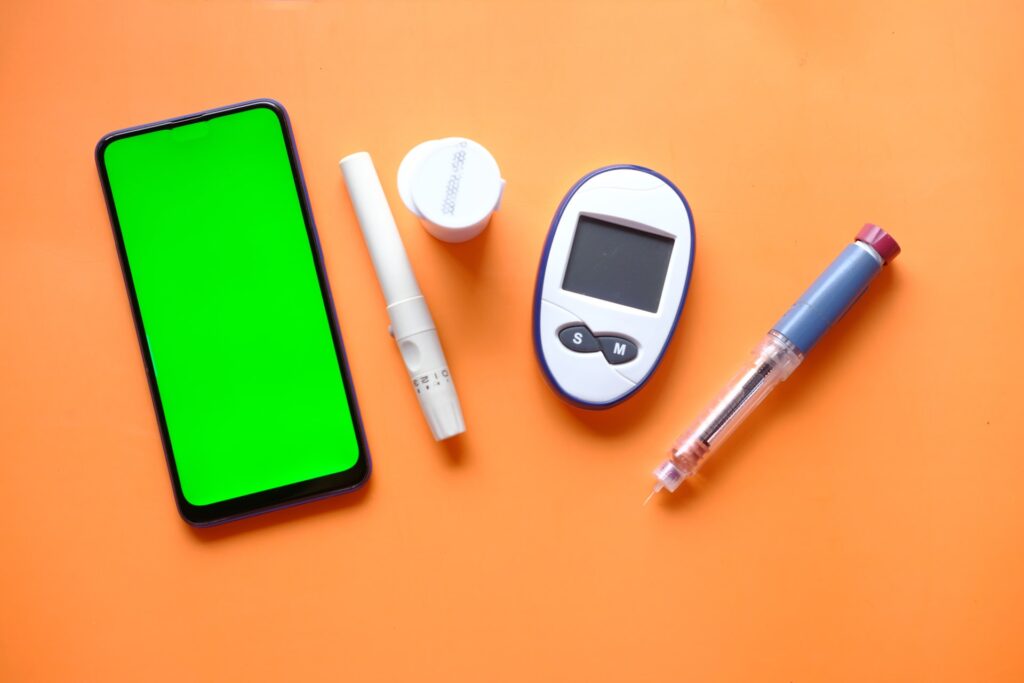Table of Contents
Diabetes
Diabetes mellitus, which is also known as diabetes is a range of diseases that relate to sugar metabolism and cause irregular sugar levels within the bloodstream. According to Diabetes UK(1), the symptoms of diabetes are frequent urination (especially at night), constant thirst, feeling of tiredness, unexplained weight loss, genital itching or thrush, wounds and cuts that take much longer to heal, blurred eyesight and increased hunger.
What are diabetes symptoms?
There are 2 types of diabetes to be distinguished. Both of them have unique causes. According to Healthline(4) the differences between each type of diabetes are as follows:
- Type 1 diabetes is an auto-immune disease, where the body attacks the insulin-producing beta cells that are located in the pancreas and as these cells are destroyed the body is unable to secrete enough insulin and it requires to be delivered with an injectable pen.
- Type 2 diabetes is caused by insulin resistance. The body produces insulin but is unable to use it effectively. This can be caused by lifestyle factors, such as an unhealthy diet, being inactive, excess alcohol consumption, being obese etc. As the body becomes insulin resistant the pancreas will aim to increase the production of insulin and it will increase blood glucose levels.
Diabetes symptoms are:
- Frequent urination
- Feeling very thirsty
- Feeling very hungry despite eating meals
- Extreme fatigue
- Blurred vision
- Cuts and/or bruises that heal slowly
- Weight loss despite eating a lot (type 1)
- Tingling, pain, or numbness in distal limbs (type 2)
Diabetes treatment
There is no cure for type 1 diabetes and type 2 diabetes can be managed or reversed with diet and exercise. If that is not effective, then the doctor would have to prescribe medications that allow utilising insulin more effectively(4).
Diabetes guidelines
General recommendations for both types of diabetes are similar, however, it is to be noted, that regular blood check needs to be performed by type 1 diabetics. Both type 1 and type 2 diabetics are recommended to follow classic healthy nutrition guidelines(5). It is also to be noted that type 1 diabetics in some circumstances may require to quickly raise their blood sugar levels after injecting too much insulin or not eating enough carbohydrates after the insulin shot. In this case, they should carry a small snack high in sugar content that can quickly raise sugar levels(6). That could be a chocolate bar or sugary drink.
Nutritional therapy
Patients suffering from diabetes can be supported through nutritional therapy. As diabetes itself causes abnormal blood sugar levels, nutritional therapy should focus on foods and nutrients that help normalise these levels. This can be achieved through the consumption of foods and nutrients that stabilise and lower blood sugar. Such food and nutrients can prevent or minimise blood sugar spikes, thus making the condition less dangerous for the patient. Others can increase insulin sensitivity or lower the glycemic index of the food as they are considered healthy products not only for people suffering from diabetes but also for the general public. As diabetes can also cause hypoglycemia it is important to note that in some cases high GI (glycemic index) products are essential as blood sugar dropping too low could make the patient faint, induce diabetic coma and even death, thus stories about diabetics keeping a single chocolate bar, a pack of gummy bears or a can of sweetened drink are often heard.
According to NIDDK(2), some types of foods should be limited for diabetics. Examples of such foods are foods high in saturated and trans fats, foods high in salt, sweets and sweetened beverages. Such foods will generally negatively impact one’s health and can potentially harm a diabetic, therefore their consumption is to be limited.
Nutritional therapy can be applied to support individuals with diabetes through the consumption of products that help bring the blood sugar levels back to normal and have a positive impact on general health. Some of the products that support proper blood circulation can also be utilised as diabetes can cause poor blood circulation through damage caused to the blood vessels(3). The foods that counteract the symptoms of diabetes are generally considered foods that can help manage diabetes and support individuals suffering from it.
References:
- Diabetes UK, What Are The Signs and Symptoms of Diabetes?, accessed on 12/05/21, available at: https://www.diabetes.org.uk/diabetes-symptoms
- National Institute for Diabetes and Digestive and Kidney Diseases, Diabetes Diet, Eating, & Physical Activity, accessed on 12/05/21, available at: https://www.niddk.nih.gov/health-information/diabetes/overview/diet-eating-physical-activity
- Amputation Prevention Centers of America, ow Blood Flow: The Cold Truth About Poor Circulation Leading to Diabetes, accessed on 21/05/21, available at: https://www.apcofamerica.com/low-blood-flow-poor-circulation-diabetes
- Corinne O’Keefe Osborn, Type 1 and Type 2 Diabetes: What’s the Difference?, accessed on 18/05/21, available at: https://www.healthline.com/health/difference-between-type-1-and-type-2-diabetes
- Nayana Ambardekar,What to Eat When You Have Type 1 Diabetes, accessed on 18/05/21, available at: https://www.webmd.com/diabetes/diet-type-1-diabetes
- University of IOWA Stead Family Children’s Hospital, Low blood sugar with type 1 diabetes, accessed on 18/05/21, available at: https://uichildrens.org/health-library/low-blood-sugar-type-1-diabetes




